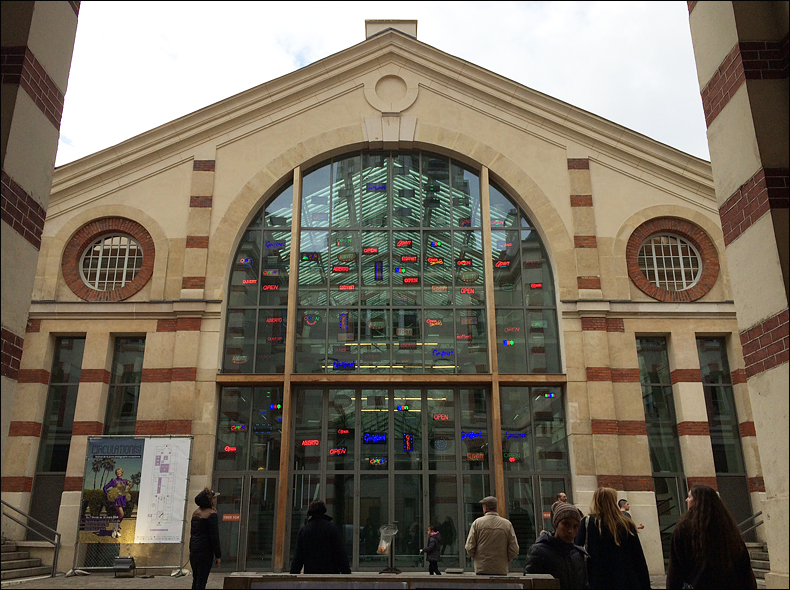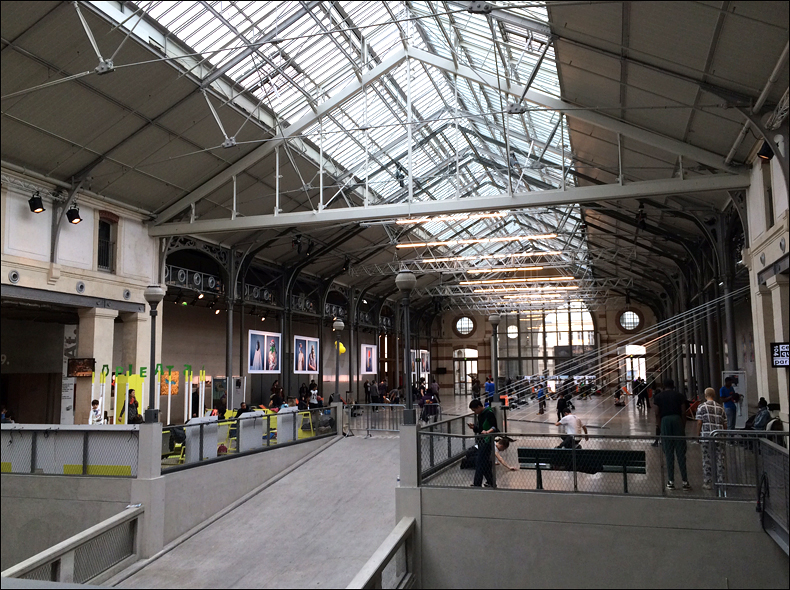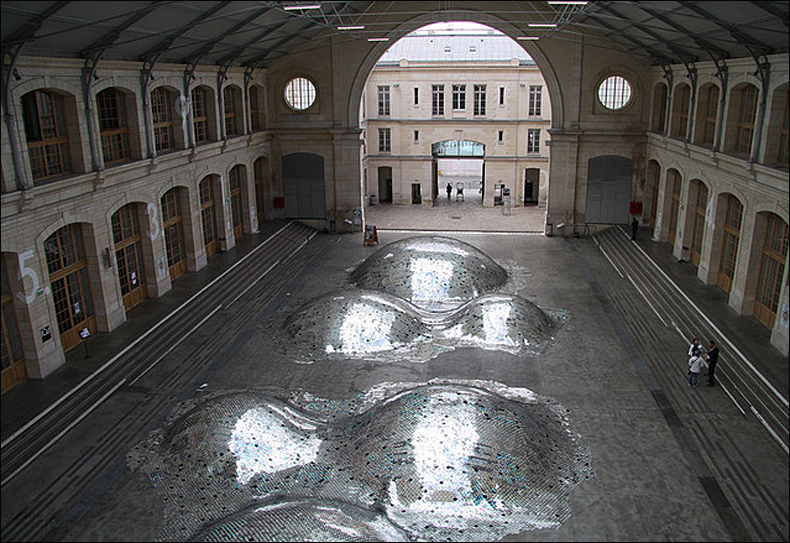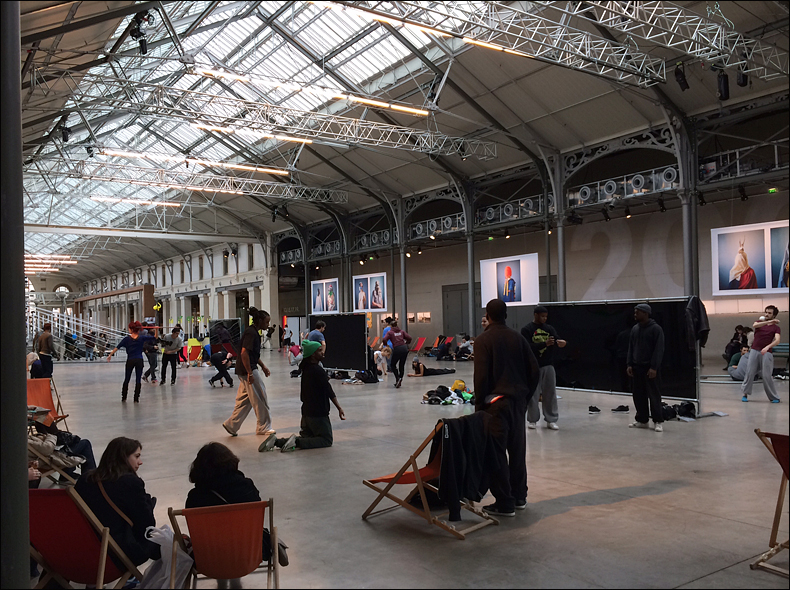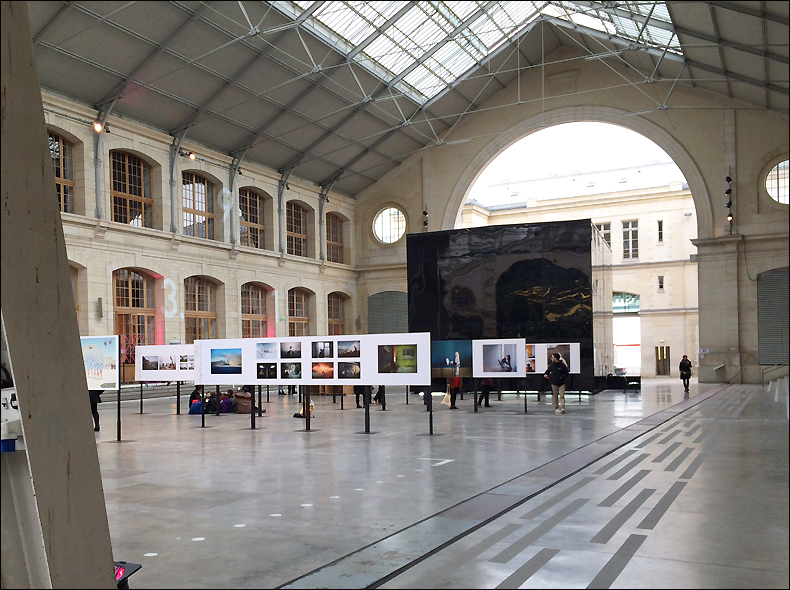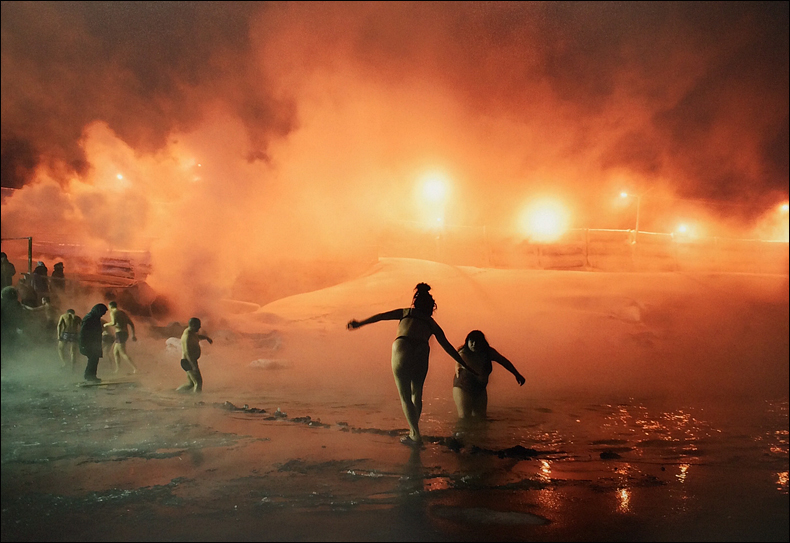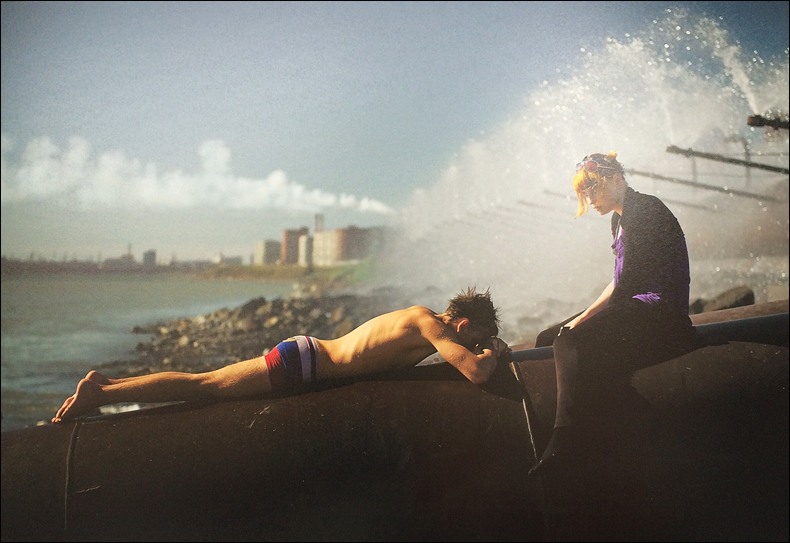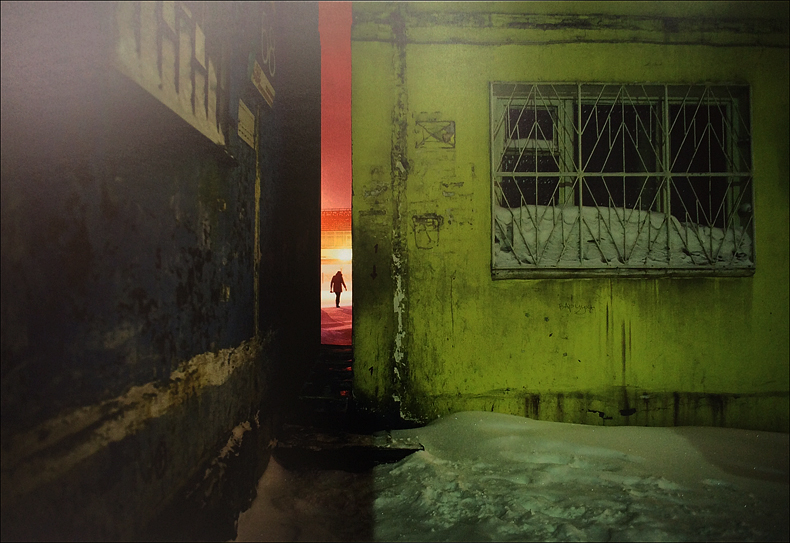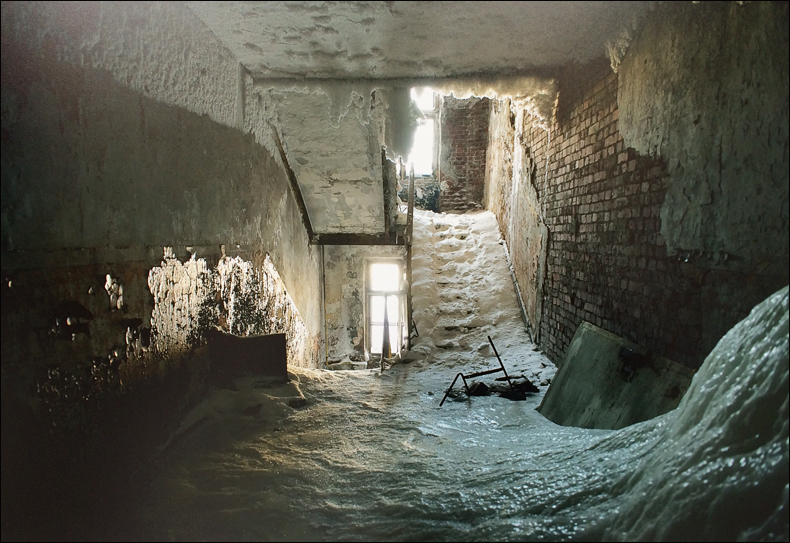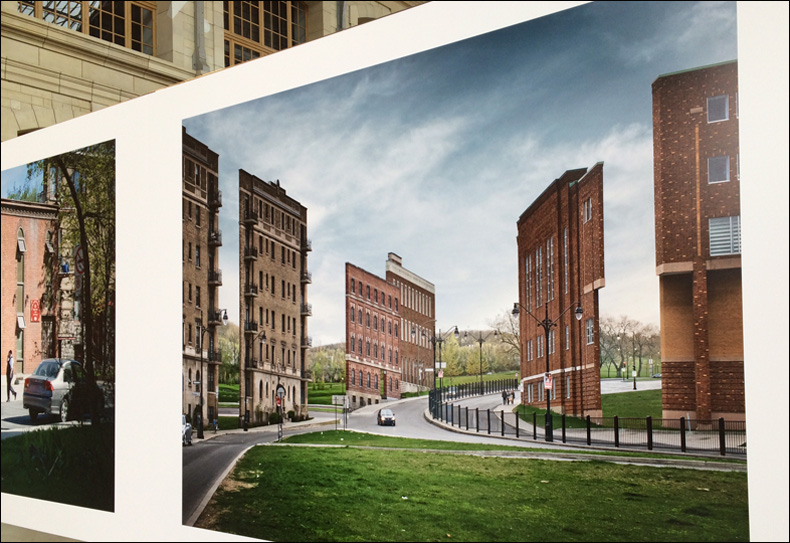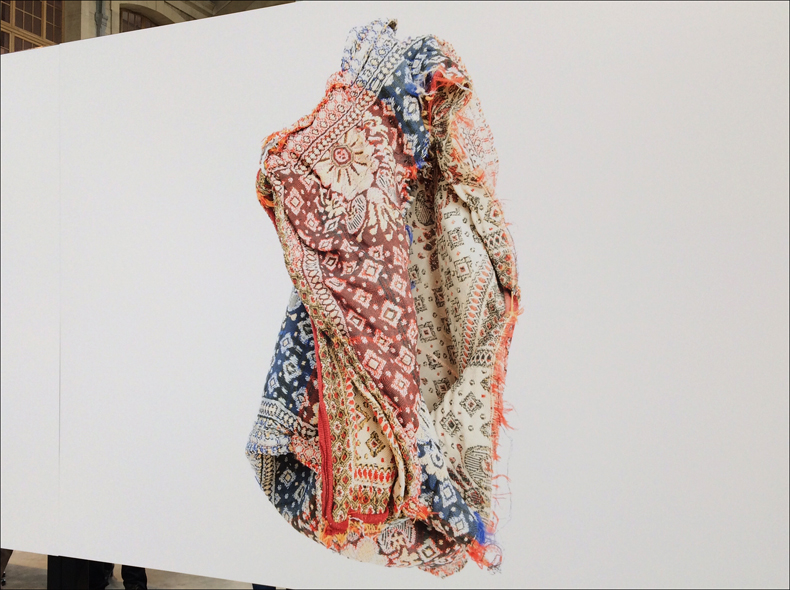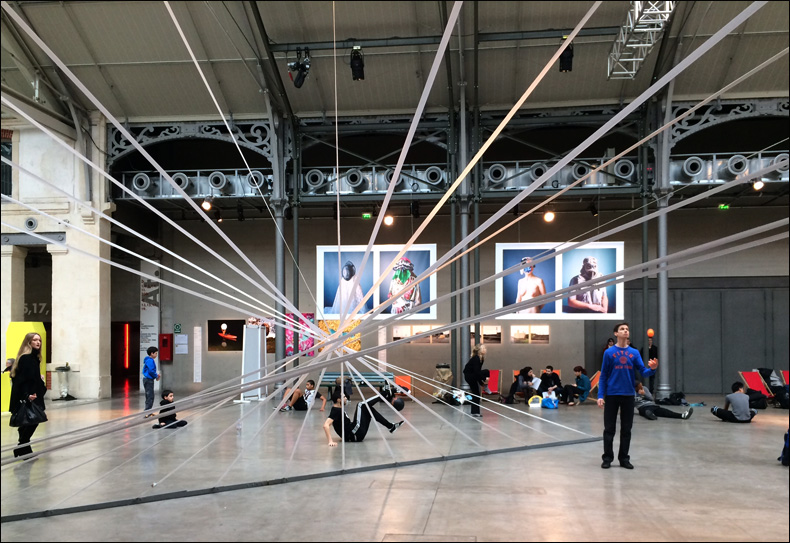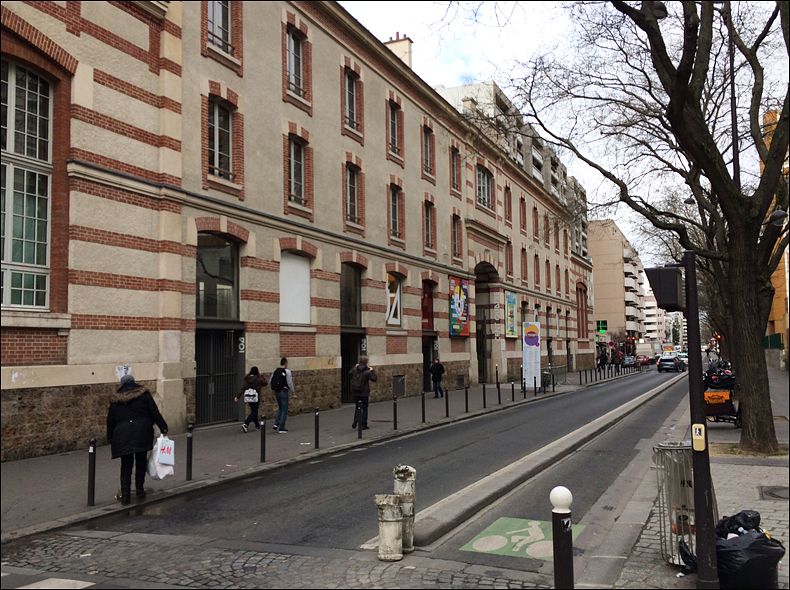For over 120 years, the 104 cultural center (Centre CentQuatre) housed the Paris funeral service. This never took in corpses,* yet its vast complex dealt with everything else. In addition to woodshops that turned out thousands of coffins and catafalques, it ran eighteen stables with a fleet of horse-drawn hearses. Around the turn of the century, it added motorised vehicles. Dozens of boutiques inside the place created items of funeral décor and, at its height, there were 1,400 workers.
This machine of the mortuary ran until 1905. Then, after the government separated church and state, the service shrank dramatically. By the 1990s, the once-thriving compound was derelict.
It took a socialist mayor of Paris to re-envision the space. But when Mayor Delanöe took it on, he did so for art. In a disaffected quartier, it has become a cultural mecca, housing everything from various gallery spaces to sport, dance, theatre and artisan workshops. There’s also a big bookstore and a lively thrift shop. The latter, run by once-homeless citizens, is completely stocked by donations and all sales support a housing charity.
The 104 has just finished showing Circulations: a now-annual feast of work by young European photographers. Some of the show was great and none of it was awful – and all of it comes from youth with faith in a united Europe. This doesn’t mean that their views are uncritical but it’s a good enough reason to cheer them on.
* The old Paris Pompes Funèbres at this address did deal with corpses on three occasions. During World War I, the Algerian War and the Indochinese War, they dealt with the bodies of Frenchmen killed abroad and repatriated for burial.
• The original CentQuatre building dates from 1873 and was built under the direction of Victor Baltard, who created 1848’s iron-and-glass Les Halles (long vanished). The remade 104 has official links to other cultural centres across Europe – transformed industrial sites in Rome, Berlin and Madrid.

